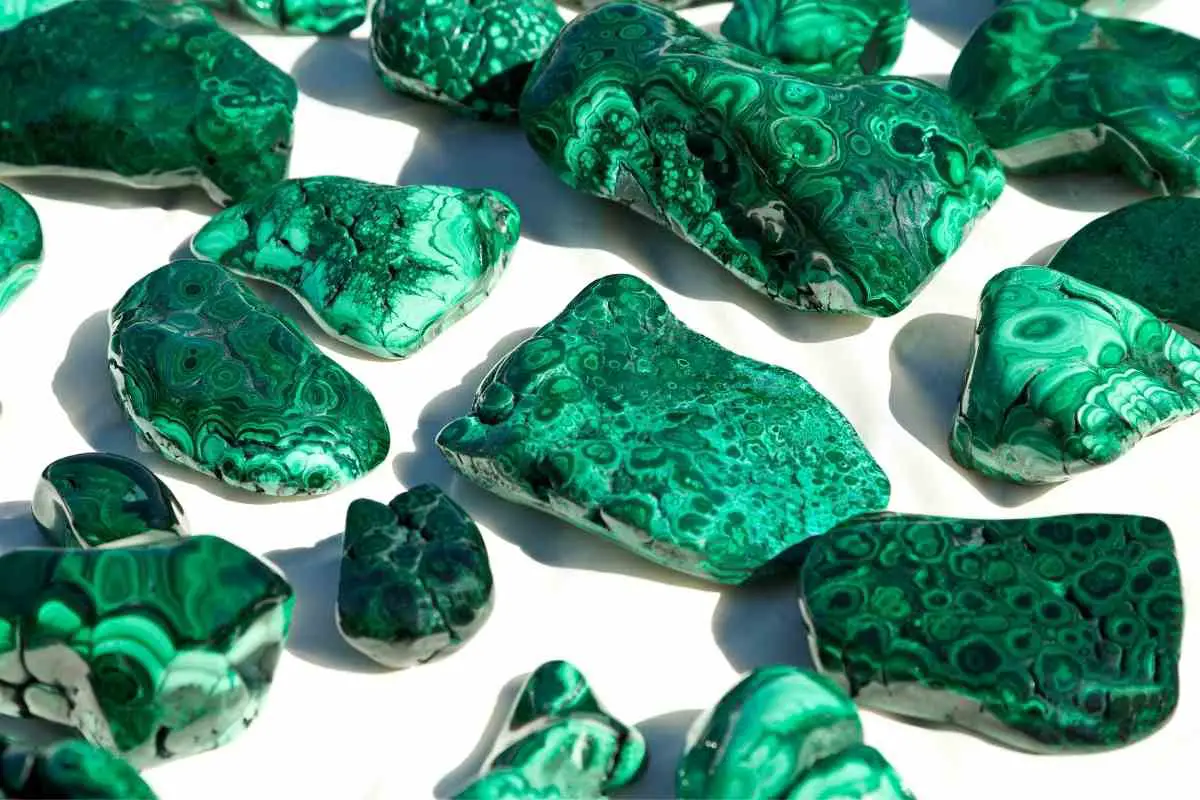If you like collecting precious stones, you don’t always have to purchase them online or at the local dealership.
Instead, you can find several valuable rocks in your backyard, including tourmaline, topaz, quartz, jade, etc.
Although they aren’t as valuable as diamonds, these gemstones are a great addition to your collection.
Some of them also fetch a reasonable price if you decide to sell.
What Equipment Do You Need to Find Valuable Rocks?
Here are the tools you need to find valuable rocks in your backyard.
Bucket
A bucket helps you to carry the rock breading the gemstones. It’s also helpful in ferrying away extra soil.
Because of the arduous nature of mining, it’s advisable to use metallic buckets.
Pickaxe
A pickaxe tool helps you remove dirt from the rocks when extracting gemstones.
It has a T-shape, with one end being sharper than the other.

Shovel
A shovel also called a spade, is used to remove dirt from the earth’s surface.
It’s also helpful in removing extra soil when digging into the surface.
Tweezers
Sometimes, valuable rocks might disintegrate into specks so tiny that you can’t pick them with your bare hands.
This is where tweezers come in handy.
Classifier
Classifiers are a tool used to remove the tiny pearls used to isolate gold.
However, they’re also useful for removing debris when extracting valuable rocks in your backyard.
Where Are You Likely to Get Valuable Rocks?
After collecting all the requisite tools, the next thing involves finding a site likely to contain valuable rocks.
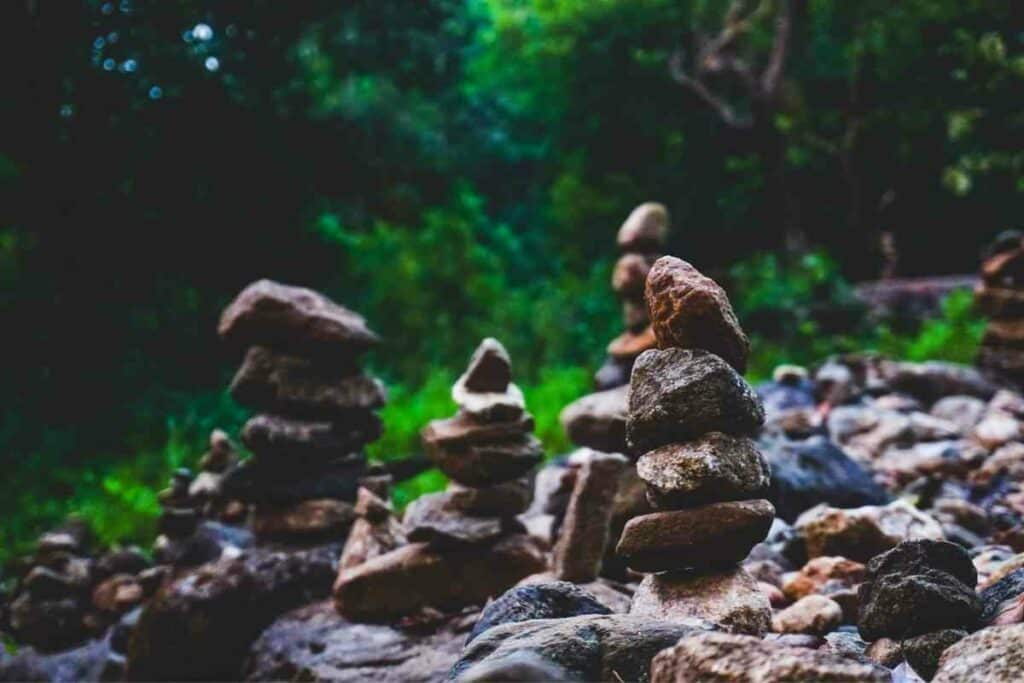
Again, it’s best to start with rocky areas because most minerals are preserved below rocks.
Generally, areas that experience frequent earth movements tend to have more minerals.
This is because the movements bring the valuable rocks closer to the earth’s surface.
If you don’t have a rocky area in your backyard, look for a creek, a river, or a lake.
Such sites also tend to have rich mineral deposits.
How to Identify Valuable Rocks
If you notice a rock with an unusual appearance, don’t overlook it – there’s a chance that it could be valuable or contain gemstones.
The best way of assessing the value of rock is by inspecting its color, feeling its hardness and checking surface markings.
Color inspection
Although it’s a defining factor, color isn’t an adequate identifier of gemstones.
For instance, iron pyrite looks like gold, but it has negligible value compared to real gold.
Moreover, color is only useful for identifying monochromatic minerals.
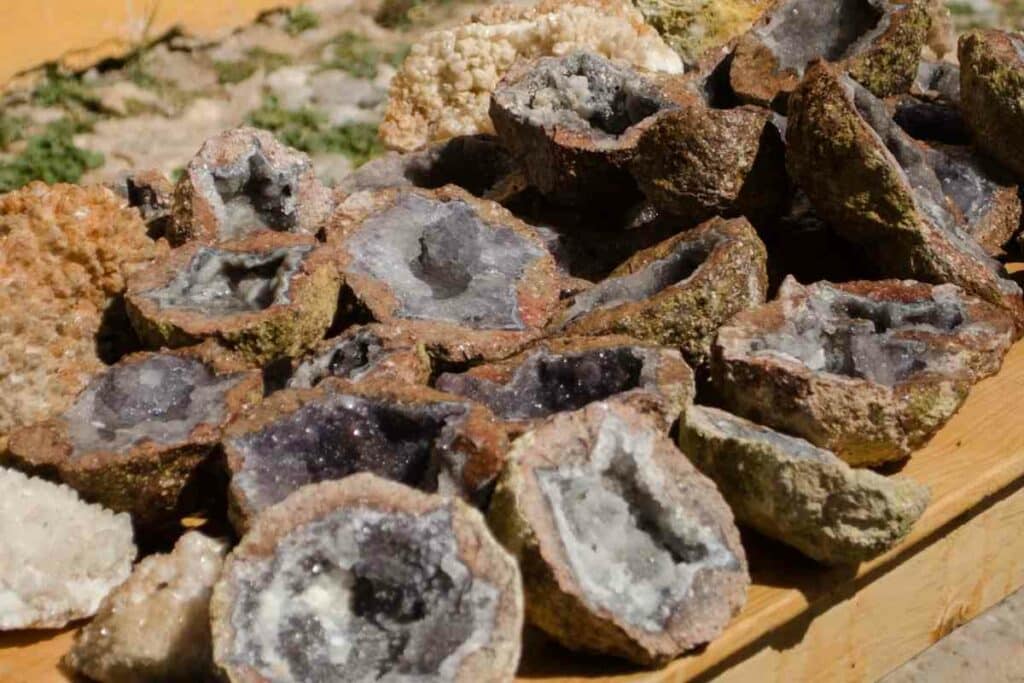
However, most valuable rocks have multiple hues due to impurities.
Color helps narrow down a sample to a few mineral choices, but it doesn’t give an accurate answer.
The streak test
The powder resulting from crushing a rock usually has a different color from the rock itself.
Therefore, you wouldn’t want to crush a rock that you think has value. Instead, it’s better to conduct the streak test.
You’ll need a piece of unglazed porcelain. Then, swipe the sample across the time and assess the streak it leaves.
For Instance – Jade leaves a green streak, while chalcopyrite leaves a black one. The only drawback of the streak test is that it’s ineffective if the mineral is harder than porcelain.
The hardness test
The hardness test uses a scale ranging from 1 to 10, designed by a mineralogist known as Frederich Mohs.
Generally, harder minerals are more valuable than softer ones.
If the mineral can get scratches from your fingernails, its hardiness is 2.5 Mohs or less.
Minerals with a hardness of 5.5 Mohs require glass to scratch, while those with a rating of 6.5 Mohs and below can leave a streak on unglazed porcelain.
Diamonds have a hardness of 10 Mohs and can only get scratches from another diamond.
Identifying meteorites
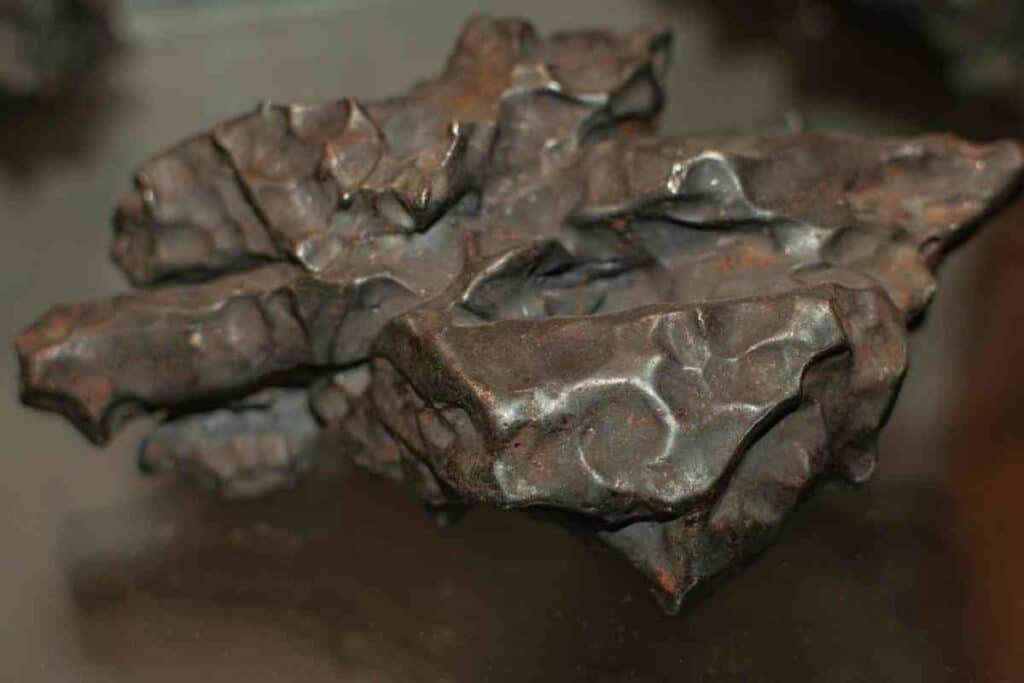
Sometimes, the valuable rocks in your backyard might come from meteorites rather than occur naturally in the ground.
Meteorites usually have a crust resulting from the high heat generated by the friction encountered as it travels from the atmosphere towards the earth’s surface.
They’re also blacker than most terrestrial rocks and have flow lines created as they travel through the atmosphere in a semisolid state.
Which Valuable Rocks Can You Find in Your Backyard?
The following are some of the rocks you can find in your yard.
1. Quartz
Quartz is arguably the most abundant rock on earth.
It has many gemstone variants, including agate, amethyst, carnelian, and citrine.
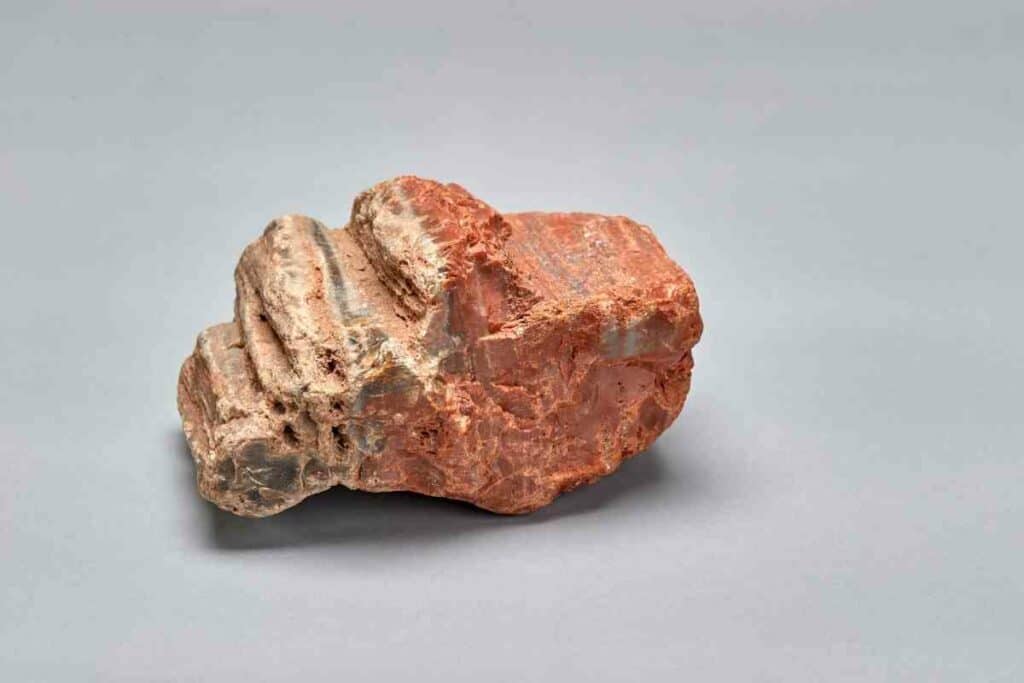
Pure quartz is colorless – it’s the impurities that give off the vibrant hues. The stone is relatively inexpensive and useful for making jewelry and shaping sculptures.
High-quality quartz crystals are cool on the hands and have a clear, glassy appearance.
Because quartz crystals are easy to find, they are cheaper than other precious stones.
However, clearer and larger crystals fetch higher prices.
2. Opal
Opal is a radiant precious stone originating from silica.
Some rare opals are more expensive than diamonds.
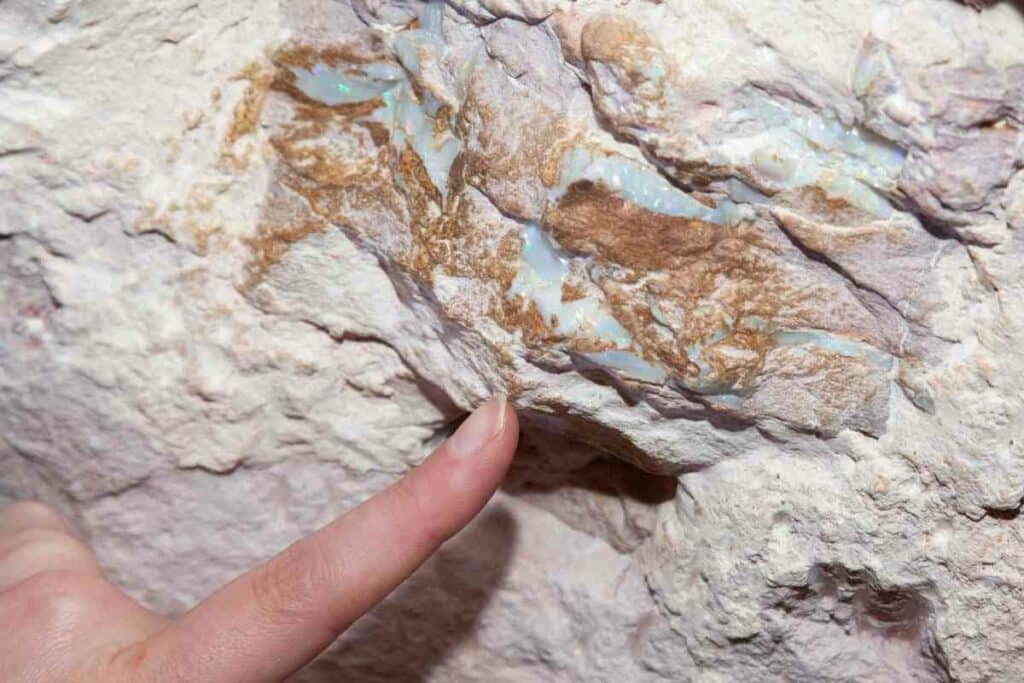
The precious stone is available in multiple colors, including:
- ack
- brown
- green
- pink
- purple
The primary use of opal is making jewelry. It’s also used for carving sculptures.
Opals are easy to find because they’re lustrous.
The stone is prevalent in Southwestern states, like Nevada and California.
The most expensive opals are prismatic and can reflect every color in the spectrum, depending on how you hold them against the light.
The brighter the reflection, the more valuable the opal.
3. Topaz
Topaz is a hard gemstone (and one of the hardest minerals overall) available in multiple colors.
It’s affordable and occurs in large crystals.
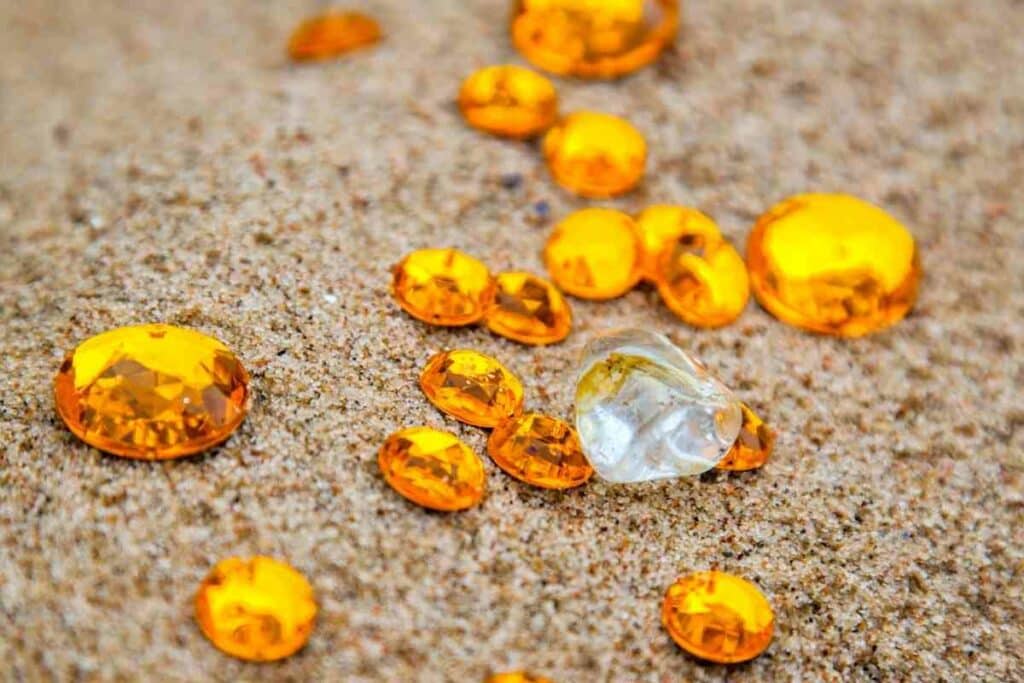
Naturally, topaz has light-hued crystals. However, it also has a colorless variant that is used as a diamond simulant.
When Processed – Topaz is used for making a variety of jewels, including earrings, bracelets, and pendants.
The quality of topaz mainly depends on its color.
Pink topaz is the most valuable variant and makes high-end jewelry. Sometimes, people mistake topaz for citrine, which is cheaper.
4. Peridot
Peridot is a relatively abundant precious stone with a pale, yellow-green appearance.
It’s particularly famous among collectors because it produces a bright green reflection that varies according to the light source.
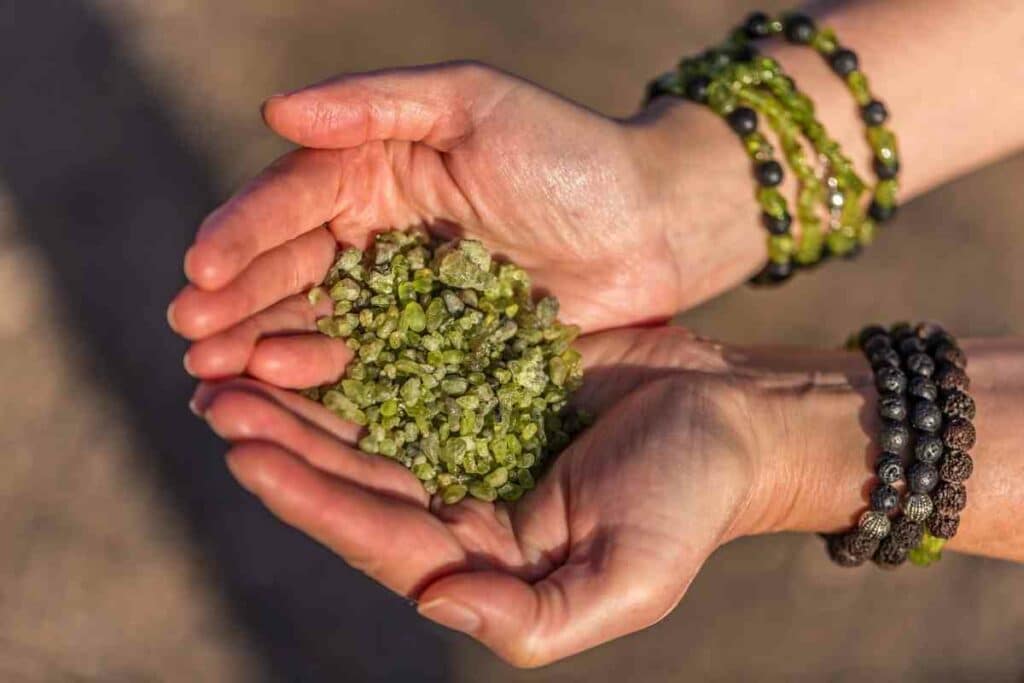
Unlike most gemstones, peridot occurs in flakes and tiny pieces. As a result, you’re likely to encounter large crystals, but this happens rarely.
In the United States, the stone is prevalent in:
- Arizona
- Hawaii
- New Mexico
- Wyoming
The small size of the peridot makes it challenging to find the gemstone in the soil.
It’s advisable to wear a loupe when searching for this gemstone so that you can notice its distinctive green sparkle.
Color intensity is the measure of quality for peridot crystals. The greener the stone, the higher its value.
Yellow peridots are the easiest to find. On the other hand, a brown streak in peridots indicates low quality.
5. Obsidian
Obsidian is a glassy stone that is primarily black.
However, you can encounter green and brown obsidians—the stone forms when molten rocks cool rapidly to firm large, soft-textured crystals.
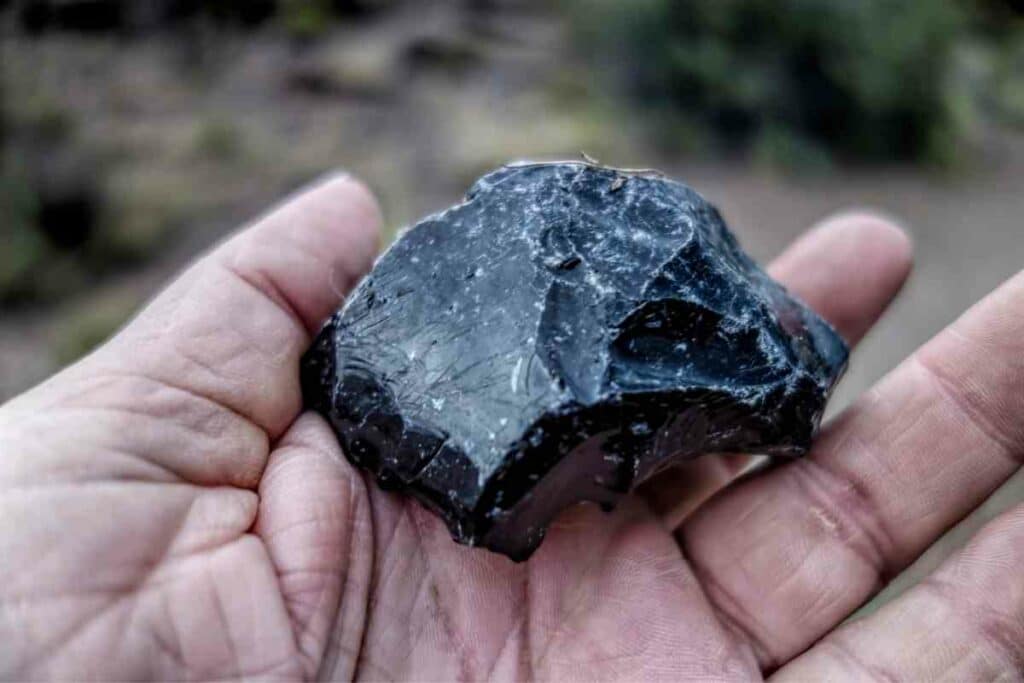
In the past, people used obsidian as a cutting tool because it was tough and had sharp edges.
Today, surgeons use it for operations because it’s sharper than steel and creates precise incisions.
Due to its unique, glassy appearance, obsidian is easy to find.
It’s a predominant rock in the Western States, including:
- Arizona
- California
- Oregon
- Washington
The value of obsidians depends on the age of a crystal. However, it isn’t easy to find old pieces, as the rock is fragile.
If You’re Lucky – You can encounter a crystal that has existed for a few million years and make good money off it.
6. Garnet
Garnet is a precious stone that doesn’t need expert knowledge to extract from your backyard.
Its most common uses include making jewelry and other decorative articles.
The most prevalent forms of garnet are almandine, pyrope, and rhodolite.
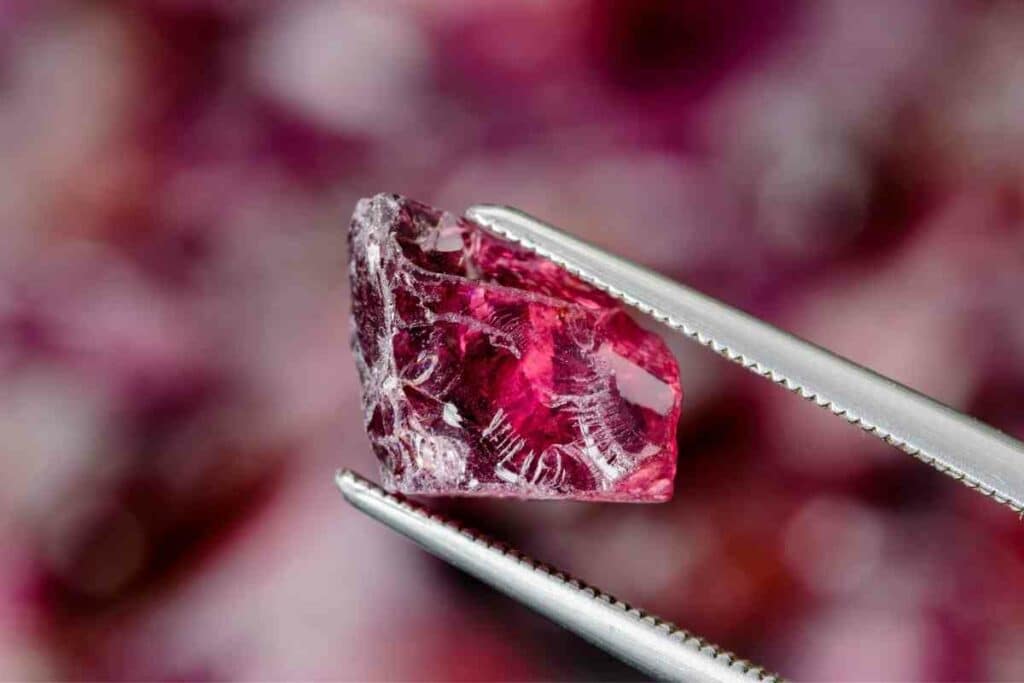
Of these, almandine is the easiest to find and is mainly used to make jewelry.
The other two are rare but are also helpful for making beauty accessories.
Although hardness varies by type, Garnet is hard enough to be considered an abrasive substance.
Hard garnet crystals have many industrial uses, including cutting steel and other metals.
You can’t gauge the quality of garnet by looking at a crystal.
This is because the gemstones have several impurities that give them a darker appearance. Mostly, high-quality crystals are translucent and bright.
7. Jade
Jade is predominantly green, but you’ll often encounter purple and white crystals.
It’s a combination of two minerals, jadeite and nephrite.
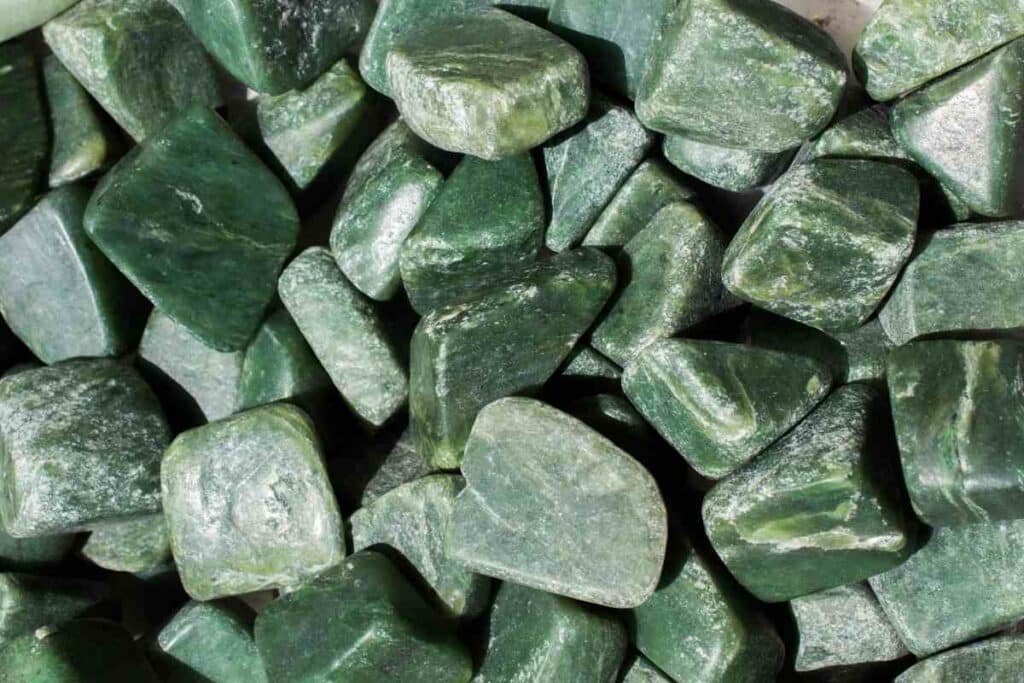
The most common use of jade is making jewelry, which started many years ago. Other uses include carving sculptures and making tools.
Jade occurs naturally in metamorphic rocks and is common in:
- California
- Washington
- Wyoming
Because of its high demand in China, jade is one of the most expensive gemstones.
Its premium variant, known as ‘imperial jade,’ has an intense green appearance.
8. Malachite
Malachite isn’t famous for its looks.
It has opaque crystals with rings and spots that form random patterns across its surface.
Malachite comes from limestone, and its uses include making beads and carvings.

Usually, malachite is sold in bulk amounts at lower prices than other precious stones.
Its quality depends on the vibrancy of its appearance and the noticeability of its rings and spots.
Being a natural stone product, each malachite crystal has a unique appearance, a property that many collectors find appealing.
9. Turquoise
Turquoise owes its popularity to its distinctive color.
The stone has several uses, including making jewelry, sculptures, and tools.
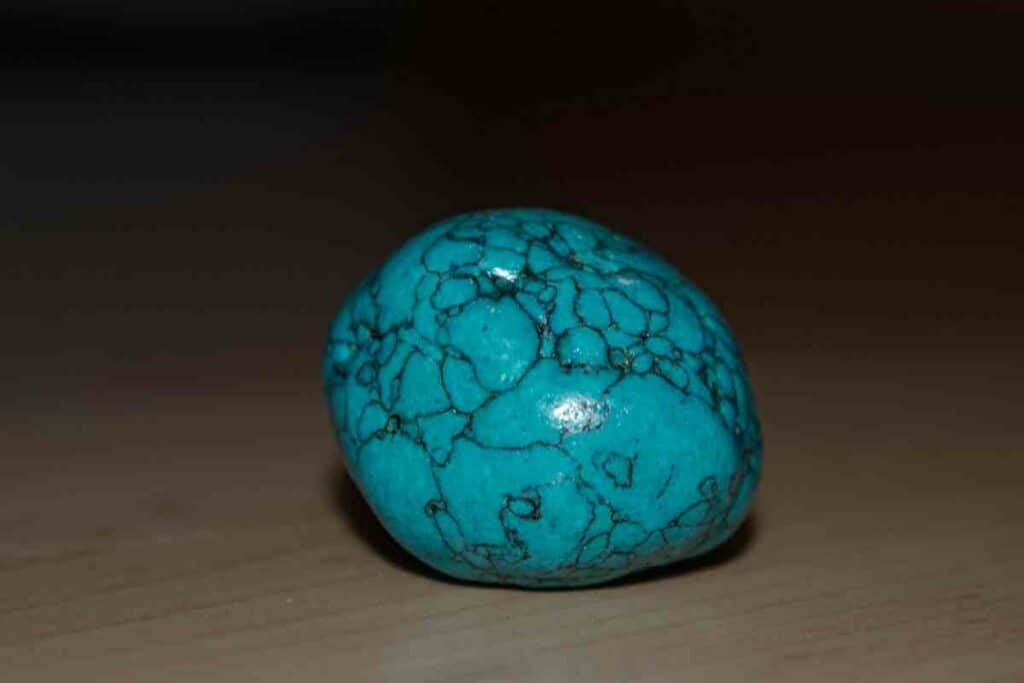
However, turquoise is highly porous and shouldn’t be clean with anything besides water. It’s also sensitive to sunlight and must be kept in dark conditions.
On the bright side, the stone doesn’t change its appearance after processing.
The best type of turquoise, which is also the rarest, is lander blue turquoise.
Generally, any turquoise crystal with an intense blue hue is considered valuable.
That said, increased mining worldwide has made this mineral rare. The prices will likely go up soon.
10. Tourmaline
Tourmaline is a group of related minerals that occurs in many colors.
Therefore, the price of this gemstone depends on the size and color of the individual crystals.
Although most tourmaline crystals are monochromatic, you can find multi-colored stones.
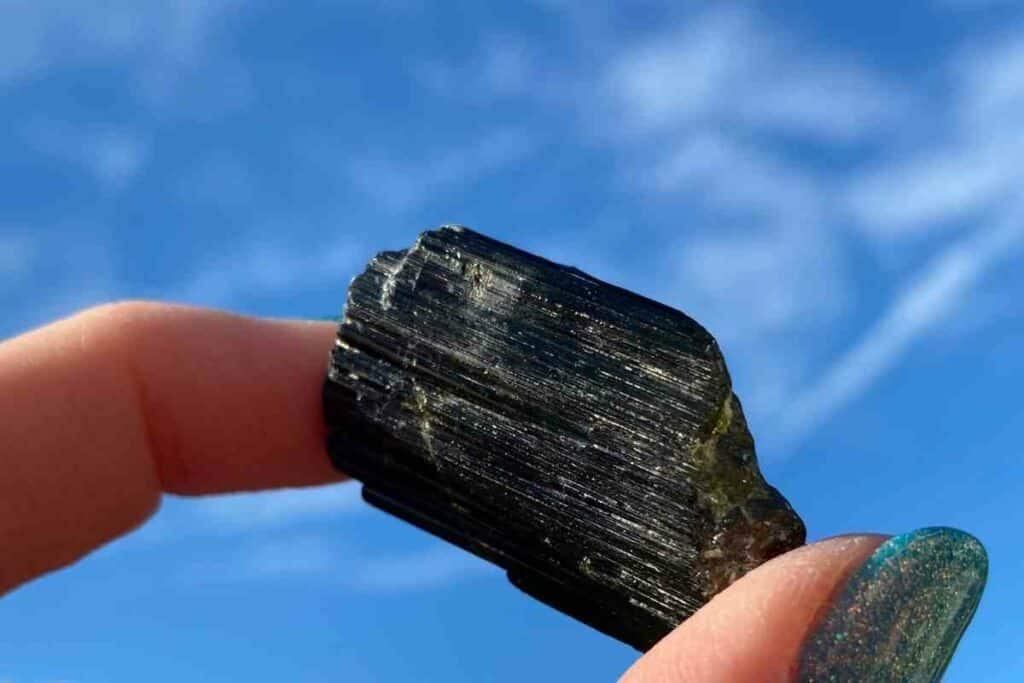
Also, the appearance can vary depending on the light source and viewing angle.
Black tourmaline has the most distinctive appearance and shines brightest under the light. Other colors are commonly mistaken for other gemstones.
Smaller tourmaline crystals are used for making bracelets, necklaces, and other jewelry.
On the other hand, larger pieces are often carved into sculptures.
In the United States, you can find tourmaline in California and Maine.
However, you must go to Brazil to find the most expensive and rarest tourmalines that cost thousands of dollars per crystal.
11. Agate
If you suspect that your backyard has agate, hold a sample against a light source.
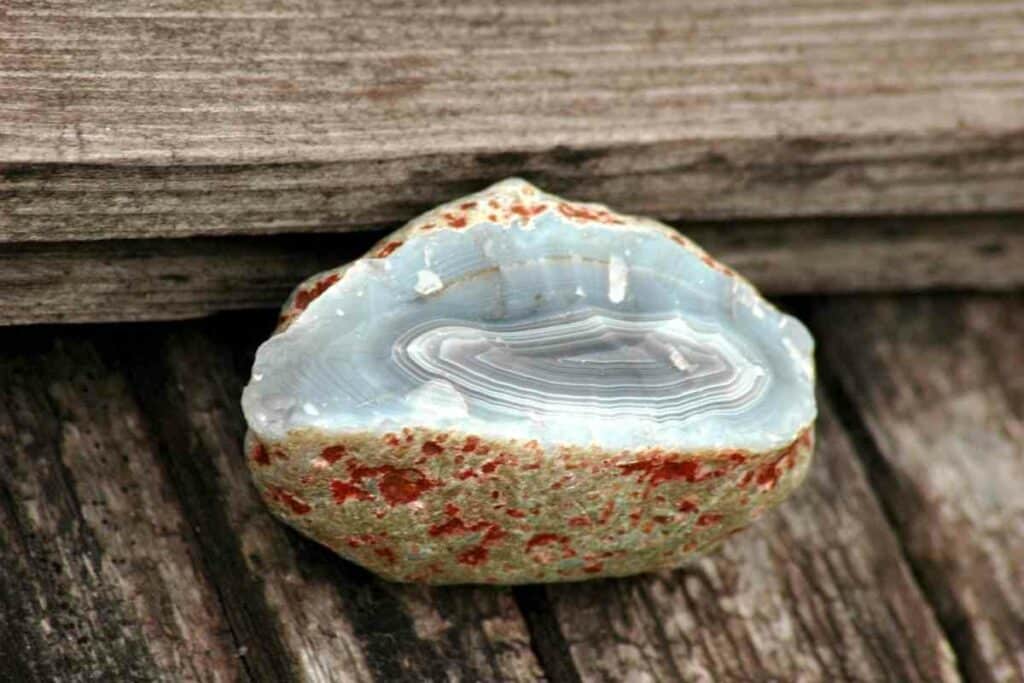
If the stone is reddish-brown, somewhat translucent, and has noticeable stripes, it’s likely an agate.
However, agate isn’t as valuable as other gemstones.
It’s why it’s sold in bulk, and larger pieces fetch higher prices. Stones with a striking appearance also cost more than bland ones.
Agate is particularly common in Western USA and areas with igneous rocks.
12. Amethyst
Amethyst is one of the most precious stones in the quartz family.
It has a beautiful purple hue that makes it a popular choice for making earrings and pendants.
You can find amethyst in Arizona, Colorado, Maine, and North Carolina as a rockhound.
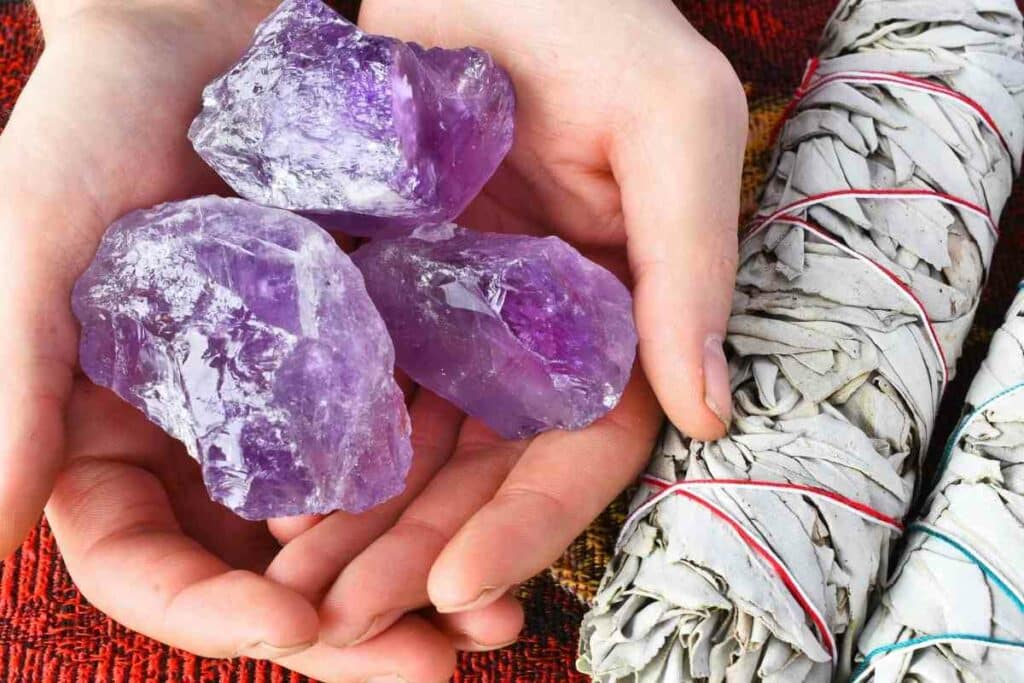
Outside these states, this valuable rock isn’t easy to find.
You can try your luck with rock geodes found in creeks, rivers, and streams. You’ll find the gemstone inside the larger rock if you’re lucky.
The color of an amethyst crystal determines its quality. The best amethysts have a medium to deep violet hue.
Darker tones are less desirable because they need intense lighting to reflect lighting, defeating the primary purpose of obtaining gemstones.
Heads Up! If you want to increase the value of your amethyst, don’t remove the precious stone from the rock geode.
What Next After Finding Gemstones?
After discovering a valuable rock in your backyard, clean the gems to remove the dirt.
Ensure that you use water since other materials can damage your gemstones.
Next, use the guide mentioned above to identify the type of gemstone.
If you can’t, take the sample to an expert for further tests.
Upon identification, you can add the rock to your collection or sell it.
Other Ways of Finding Valuable Rocks
If you can’t find valuable rocks in your backyard, don’t worry – there are several other ways of expanding your gemstone collection.
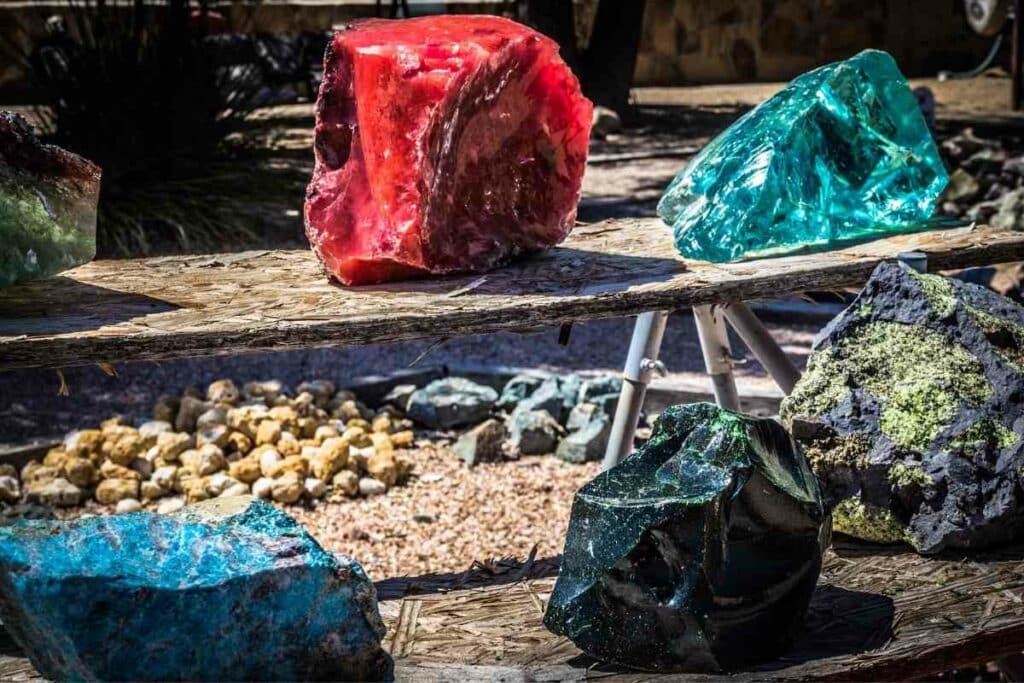
Here are some alternative methods of finding valuable rocks.
Fee mining
As the name suggests, you pay a small fee to get permission to explore minerals in a given parcel of land.
The United States has many fee mines spread across the country, but most are on the West Coast, renowned for having substantial gemstone reserves.
Besides, fee mining is an excellent way to grow your knowledge of gemstones.
This is because the sites have mineral experts teaching how to identify precious stones and spot mineral deposits.
Opencast mining
Opencast mining is a popular way of mineral exploration because it doesn’t involve the excavation of vast pieces of land.
If there’s an abandoned quarry near your home, you can explore it for minerals.
Remember to carry proper gear and bring a friend to help you in an emergency.
Oceanside mining
Oceans tend to have substantial gemstone deposits.
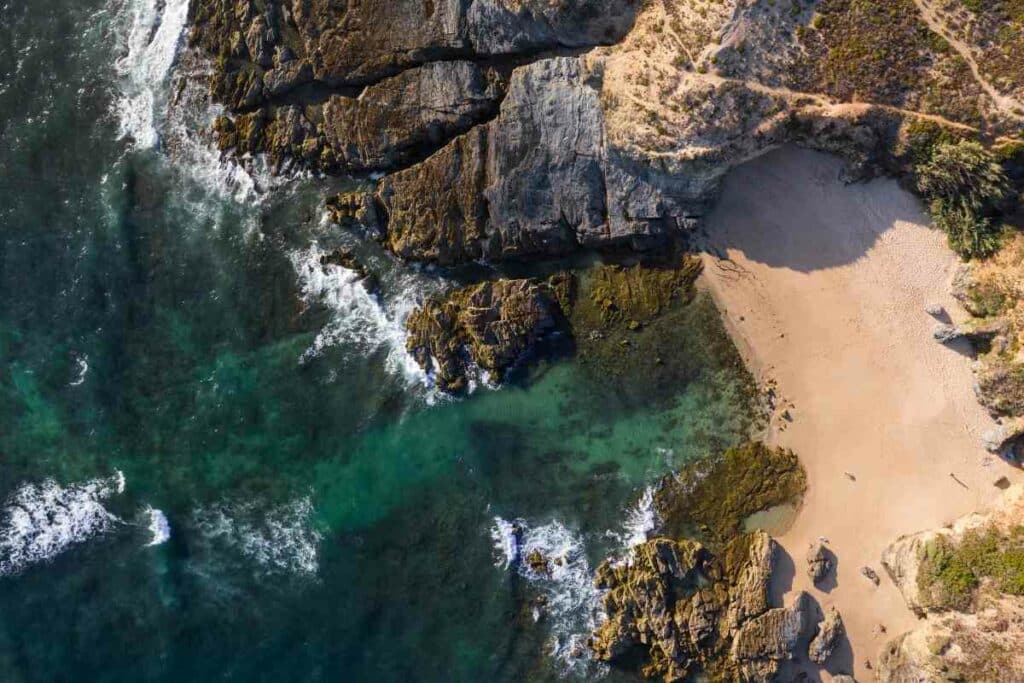
If you live along the coast, try exploring the shallow beaches.
One popular location for underwater gemstone exploration is the Jade Cove Trail in Big Sur, California.
Most states have strict guidelines on the activities you can partake in near oceans. Ensure that you don’t endanger marine life during your expeditions.
Mountain prospecting
As mentioned earlier, areas that experience earth movements usually have rich mineral deposits.
Therefore, it’s easy to find valuable rocks in mountainous regions.
However, this form of exploration requires research to identify the locations likely to have these precious stones.
Wrapping Up
As you relax in your yard, you could be unknowingly stepping on precious stones.
Some valuable rocks, such as quartz, are easy to find anywhere. However, they aren’t easy to identify in their natural state.
If you live in a rocky region with a history of volcanic activity, earthquakes, and other earth movements, there’s a high chance that the surface is rich in valuable rocks.
However, it would be best if you didn’t start exploration without proper knowledge of minerals.
Get the tools and start exploration once you know what to look for. Then, you can add new gemstones to your collection or sell them for profit if you’re lucky.
Regardless of your actions, you’ll get a sense of accomplishment when you successfully mine the first gemstone.
